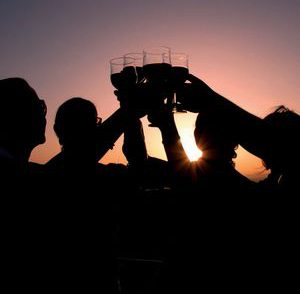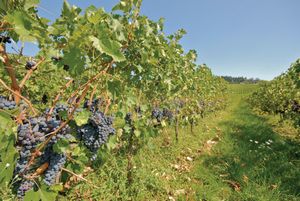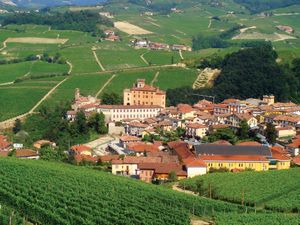No holiday party would be complete without a little bubbly. In fact, approximately 40 percent of the year’s Champagne consumption takes place in December alone. Annual worldwide sales of Champagne exceed 300 million bottles per year. While 58 percent of the golden nectar stays in France, the rest is exported around the world, with the UK, US and Germany being the major recipients. Following are some tips on selecting the perfect bottle and serving it. Whichever bottle you choose, pop it open with good cheer and enjoy! Buone Feste!
Careful with that ‘C’– The European Union says that Champagne with a capital C must be made in the Champagne region of France. Certain sparkling wines made in the US have been exempted and can use the word with a small c.
Styles – Sparkling wines range from very dry (natural), to dry (Brut), then slightly sweet (bewilderingly called Extra Dry), to sweet (Sec and Demi-Sec). Beware of that ‘extra dry’ if you are not looking for sweetness!
Types – Champagne producers typically have a style de maison; their goal is to have the product taste the same from year to year. To achieve this uniformity, they blend wines from several different years, which are then designated ‘non-vintage’.
Vintage Champagne is also a blend of different wines, but all from the same year. Obviously, this is not done every year, just when the quality of the harvest merits it. These must be aged at least 39 months before they can be marketed.
Rosé Champagne, with its characteristic rosy tint, is made by letting the skins of the black grapes stay with the pressed juice (or ‘must’) for a short time or by adding a small amount of red wine made in the Champagne region to the must.
Prestige Cuvées are the top of the line. The grapes—as with all Champagne grapes—are hand picked, then selected virtually one-by-one. They may be vintage or non-vintage, but they will be left to mature for five to seven years and will be coddled every step of the way until they are put on the market, generally in a special box. Cuvées cost about three times as much as a non-vintage and twice as much as a bottle of vintage Champagne.
Opening the bottle – The images of corks popping out of the bottle may look like fun, but flying corks are dangerous, and the foam pouring out of the bottle is a waste of precious wine. To open a bottle of sparkling wine, point it away from yourself and anyone else nearby. Hold the cork and neck of the bottle in one hand. Keeping the thumb of one hand on the top of the cork, unwind and loosen the wire cage with your other hand. Continue to hold the cork firmly while you twist the bottle—not the cork—until it eases out of the bottle.
The glass – If you inherited wide, shallow ‘Champagne’ glasses (coupes), use them for gelato or fruit. Sparkling wines really need a tall, narrow glass (flute) or slightly egg-shaped one (tulip), in order to show off the bubbles and concentrate the aroma. The only time you should fill a wine glass nearly full is when you serve sparkling wine
Italian competitors – There are some wonderful sparkling wines made in Italy. In fact, the method of making Champagne was actually invented by an Italian winemaker in Asti, a city in the Piedmont region, at the end of the 1800s. France gets the credit, however, because a Frenchman codified the technique in 1907.
The word spumante means ‘sparkling’ in Italian. Again, watch the capital letter. If the bottle you are admiring says Spumante, it is a particular type of wine made in a particular way. You may also see the word frizzante, which means ‘fizzy’. These wines will have lower alcohol content. Prosecco is another type to enjoy. These wines are made from 100 percent prosecco grapes and provide a refreshing, well-made wine at a reasonable price. The sub-region of Conegliano Valdobbiadene makes many of the best Proseccos. If your budget allows, try a Franciacorta wine. These consistently rank with the top sparkling wines in the world. If you see the word saten on a bottle of Franciacorta wine, it means it has been made entirely with chardonnay grapes.








